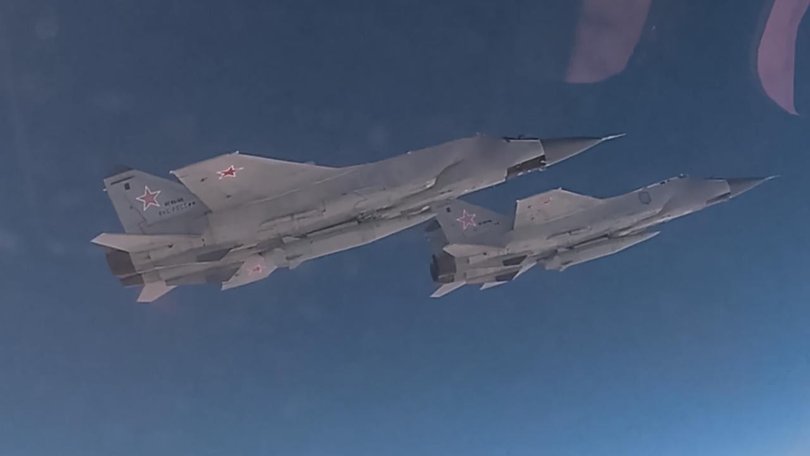Russian jets enter NATO airspace in Estonia in 'brazen incursion'

Three Russian military jets have violated NATO member Estonia’s airspace in an “unprecedentedly brazen” incursion, its government says, the latest in a series of recent military actions by Russia that have rattled the alliance.
With tensions already high because of the war in Ukraine, Friday’s incursion came only days after more than 20 Russian drones entered Polish airspace on the night of September 9-10.
That prompted NATO jets to down some of them and Western officials to say Russia was testing the alliance’s readiness and resolve.
Sign up to The Nightly's newsletters.
Get the first look at the digital newspaper, curated daily stories and breaking headlines delivered to your inbox.
By continuing you agree to our Terms and Privacy Policy.It also occurred three days after Russia and Belarus ended their “Zapad-2025” joint military exercises, which included the rehearsal of the launch of Russian nuclear weapons.
Tallinn said the three MiG-31 fighter jets entered Estonian airspace without permission and stayed for a total of 12 minutes before they were forced to withdraw, a period during which the high-speed aircraft could have traversed broad swathes of the country.
“Russia has violated Estonian airspace four times already this year, which is unacceptable in itself, but today’s violation, during which three fighter jets entered our airspace, is unprecedentedly brazen,” Foreign Minister Margus Tsahkna said.
The Russian defence ministry did not immediately respond to a request for comment.
Its jets routinely fly over the Baltic Sea between mainland Russia and its exclave of Kaliningrad.
US President Donald Trump said on Friday afternoon he had not been briefed on the incident but expected he would be later.
“I don’t love it. I don’t like when that happens,” Trump told reporters when asked if he saw the incursion by Russian jets as a threat to NATO.
“Could be big trouble. I’ll let you know later.”
Trump’s administration is being closely watched for a response.
Washington had little to say about the drone incursion into Poland and did not take part directly in fending it off, triggering anxiety among NATO members, who have questioned Trump’s commitment to their defence in case of a Russian attack.
NATO said the incident “is yet another example of reckless Russian behaviour”, but a spokesperson on X said it also showed NATO’s ability to respond.
Europeans quickly responded to the Russian jet incident on Friday, with EU foreign policy chief Kaja Kallas - a former Estonian prime minister - saying: “This was no accident.”
Estonia said it had summoned the top Russian diplomat in the country to lodge a protest.
Estonian Prime Minister Kristen Michal said his country would ask NATO to open consultations under Article 4 of the alliance’s treaty, and that the Russian jets flew about 9km into NATO airspace before Italian F-35s, stationed at a base in Estonia, pushed them out.
Article 4 states that members of the North Atlantic Treaty Organisation will consult together whenever, in the opinion of any of them, the territory, political independence or security of any of them is threatened.
Ukraine called the incursion an unacceptable new destabilisation measure by Russia and said it stood with Estonia.
“Strong action is needed, both jointly and from individual countries,” President Volodymyr Zelenskiy said on the Telegram messaging app.
Lithuanian Defence Minister Dovile Sakaliene said “we are being tested”, and NATO should urgently move air defence capabilities to frontline states.
Estonia said the airspace violation occurred on Friday morning in the area of Vaindloo Island, about 100km from the capital, Tallinn.
The aircraft did not have flight plans, their transponders were not switched on and they were not in contact with air traffic control, Estonia said.
While incursions over Vaindloo Island by Russian aircraft are common, they do not usually last as long as Friday’s incident.
